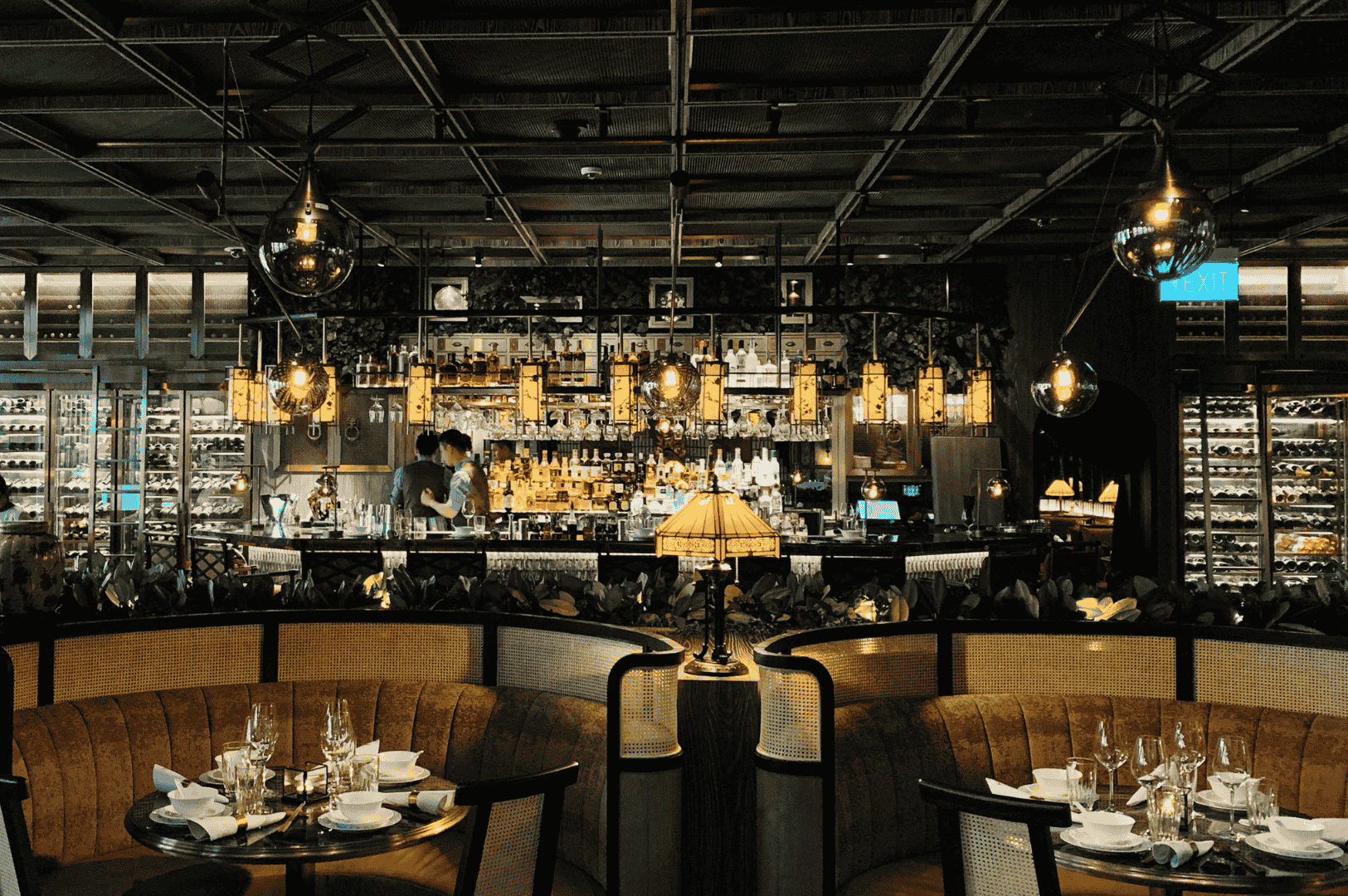Creating a powerful restaurant brand identity design is not just about a logo or catchy name—it’s about building a complete brand experience that lives in your physical space, resonates with your target audience, and creates a lasting impression. From the restaurant menu design to the floor plan of your dining areas, every choice sends a message about your brand’s story, personality, and values. A strong brand identity is deliberately created through thoughtful planning and intentional design decisions.
In today’s competitive food industry, restaurant owners need more than good food to succeed. A company’s vision and mission serve as the foundation for the brand identity design process, guiding every aspect of storytelling and spatial choices. They need a carefully crafted brand identity that translates seamlessly into their restaurant interior design and physical presence.
Let’s explore how to bring your brand’s DNA to life through strategic, creative, and functional design elements.
Brand Identity
At its core, brand identity defines your restaurant’s unique personality. It is the combination of your brand’s core values, voice, aesthetics, and mission statement that tells customers who you are. All these elements work together to create a cohesive brand’s identity that is reflected in every aspect of your business. Think of it as the personality that guides how your space looks, feels, and operates.
Strong brand recognition comes from consistency—when the restaurant menu, signage, uniforms, and physical environment all reflect the same story. Your brand identity should also consider the target audience—Gen Z diners might be drawn to bold, playful interiors and interactive experiences, while fine dining guests expect refined elegance and thoughtful design principles.
Brand’s Core Values
Before sketching a floor plan or picking a color palette, start with your brand’s core values. What do you stand for? Transparency? Sustainability? Innovation? These values shape your brand positioning in the market and influence every decision—from restaurant interior design materials to your restaurant menu design.
For instance, a farm-to-table restaurant with values rooted in sustainability may choose reclaimed wood, natural fabrics, and seasonal restaurant menu options. These design decisions transform abstract values into physical space and dining experience.
Restaurant Interior Design
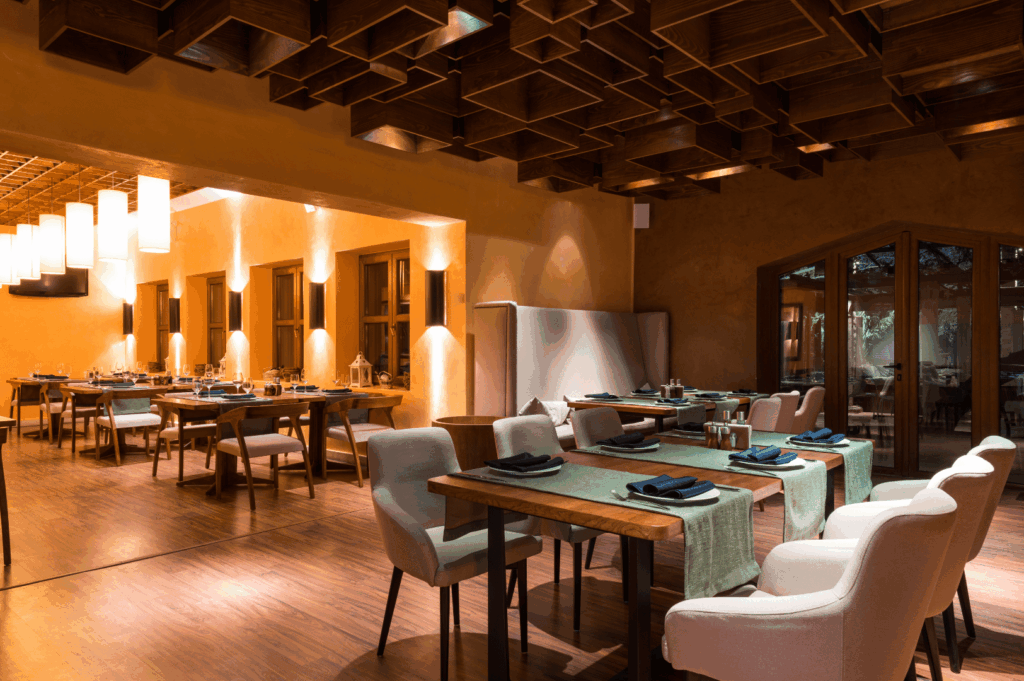
Restaurant interior design is where creativity meets function. The dining room is not just about chairs and tables—it’s about building a comfortable environment where customers enjoy your restaurant’s offerings while absorbing your brand’s personality. Thoughtful interior design can showcase and enhance the restaurant’s offerings, making the menu items and overall experience more appealing.
Use spatial design wisely. Small restaurants can still create intimacy through smart floor plans, acoustic panels to manage noise levels, and flexible seating for different group sizes. Larger spaces may focus on dining areas that feel distinct yet connected, balancing dining experience with efficiency in the kitchen area.
Physical Space
Your physical space is your stage. Every corner—lobby, bar, dining room, and even restrooms—becomes part of the brand experience. Experiential cues like art, texture, and even scent reinforce your brand’s story. Logos, when thoughtfully integrated into the physical space, help reinforce and distinguish your restaurant’s identity, serving as a fundamental visual branding element.
Take the example of Starbucks: the physical presence of wood accents, task lighting, and music transforms a coffee house into a “third place” between home and work. They use design not just to serve coffee, but to create a sense of belonging.
Restaurant Menu
Your restaurant menu is not just about food; it’s a key brand element. Each dish should reflect your brand’s DNA, whether you run a fine dining house focused on artistic presentation or a fast casual eatery built around speed and simplicity.
Menus are also part of consistent branding. When the restaurant menu design, physical interiors, and service style align, customers get a cohesive brand experience that deepens loyalty and trust.
Restaurant Menu Design
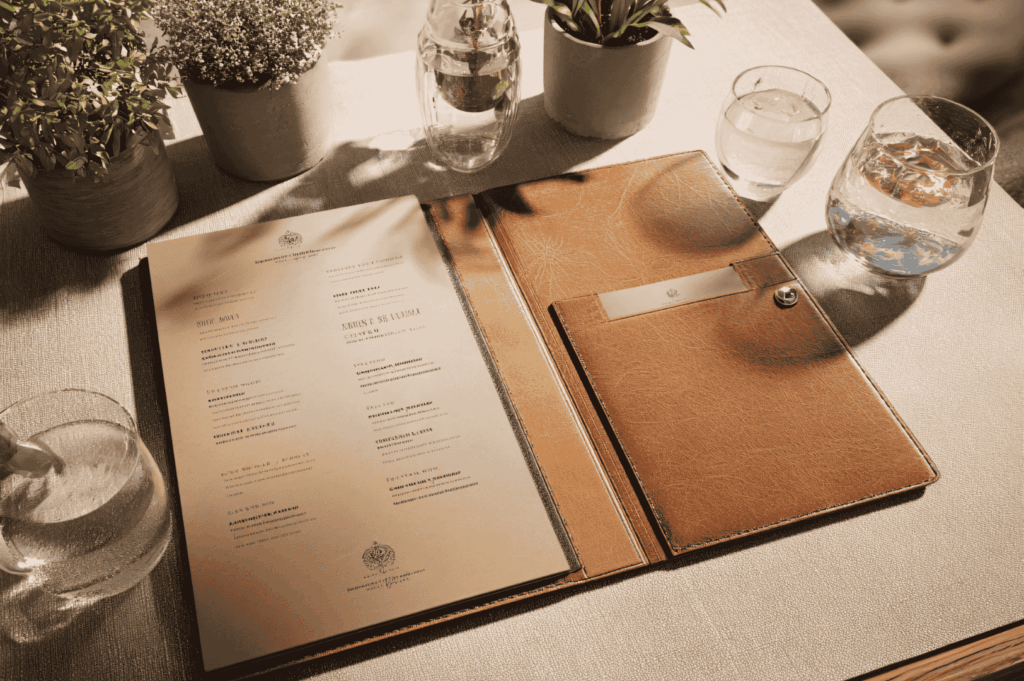
Often overlooked, restaurant menu design is equally important to your interiors. A well-crafted restaurant menu does more than list dishes—it reflects your brand’s positioning and brand colors. Fonts, layout, and imagery should align with the physical design of your space.
A sleek, minimalist restaurant menu complements a modern fast casual spot, while hand-drawn illustrations may better suit a rustic, family-style concept. Consistency between the menu design and interior design strengthens overall brand recognition.
Restaurant Design
Successful restaurant design is not an easy task—it requires balancing creativity, investment, and function.
The goal is to create a physical environment that communicates your brand’s story, appeals to your target audience, and supports smooth operations. Leading brands in the industry use design to consistently communicate their story and values across all touchpoints, ensuring a cohesive brand experience.
For restaurant owners, translating brand identity into design is about more than decoration. It involves choices in materials, color schemes, lighting design, and even acoustic panels that reflect the brand’s personality while ensuring the dining areas remain welcoming and functional.
Brand Positioning
Your brand positioning defines how customers see you in the crowded restaurant industry. Are you luxury fine dining? Fun and casual? Health-focused? The choice of location also plays a crucial role in brand positioning, as it influences the clientele you attract and shapes overall brand perception. Once established, positioning guides everything from your color palette to your mission statement, ensuring you attract the right clients.
Example: Shake Shack balances a casual vibe with high-quality offerings. Their interiors use modern design elements, natural materials, and localized art to reinforce a fresh, community-driven brand experience.
Restaurant Design and Concept
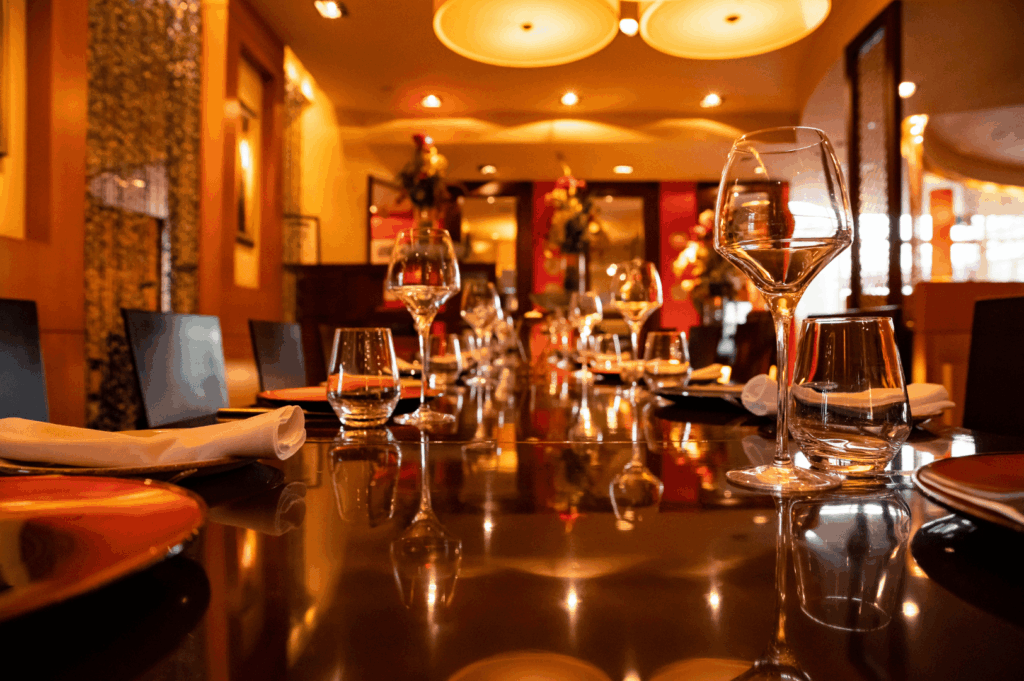
The design and concept of your restaurant are the physical manifestations of your brand’s identity. Every aspect of your restaurant design—from the layout and lighting to the choice of materials—should be a deliberate reflection of your brand’s personality, values, and mission. This creates an immersive environment where customers can experience your brand story firsthand.
Floor Plan
The floor plan sets the foundation for your physical space. Good spatial design considers customer flow, table turnover, and different group sizes while supporting staff efficiency in the kitchen area.
In small restaurants, flexible layouts and multipurpose seating help maximize space. In larger venues, zoning areas for different group sizes creates variety and comfort without sacrificing brand cohesion.
Lighting Design
Lighting is more than a practical concern—it’s one of the most powerful design elements in restaurant interiors. A well-planned lighting design combines task lighting for function with ambient light for mood.
For instance, warm tones create intimacy in fine dining, while brighter lights energize a fast casual spot. Strategic use of lighting highlights brand colors, accentuates materials, and enhances the aesthetics of your dining areas.
Interior Design
At its heart, interior design is about making the invisible visible. It translates your brand’s personality into physical cues customers can see, touch, and feel. Think of interior design as the silent storyteller of your brand’s story. Collaboration among teams is essential to ensure that every design element aligns with and expresses the brand’s personality consistently throughout the space.
From acoustic panels that control noise levels to materials like marble or wood that signal different price points, interior design shapes how customers perceive value and comfort.
Mission Statement
Your mission statement is the anchor for your design process. It articulates your brand’s core values and helps align design choices with long-term goals. Without it, even the most creative design principles can feel directionless.
For example, a mission focused on sustainability should influence everything from restaurant menu design (local, seasonal ingredients) to restaurant interior design (eco-friendly materials). When your mission statement drives decisions, the physical environment becomes a true extension of your brand identity.
Creating a Unique Brand Identity
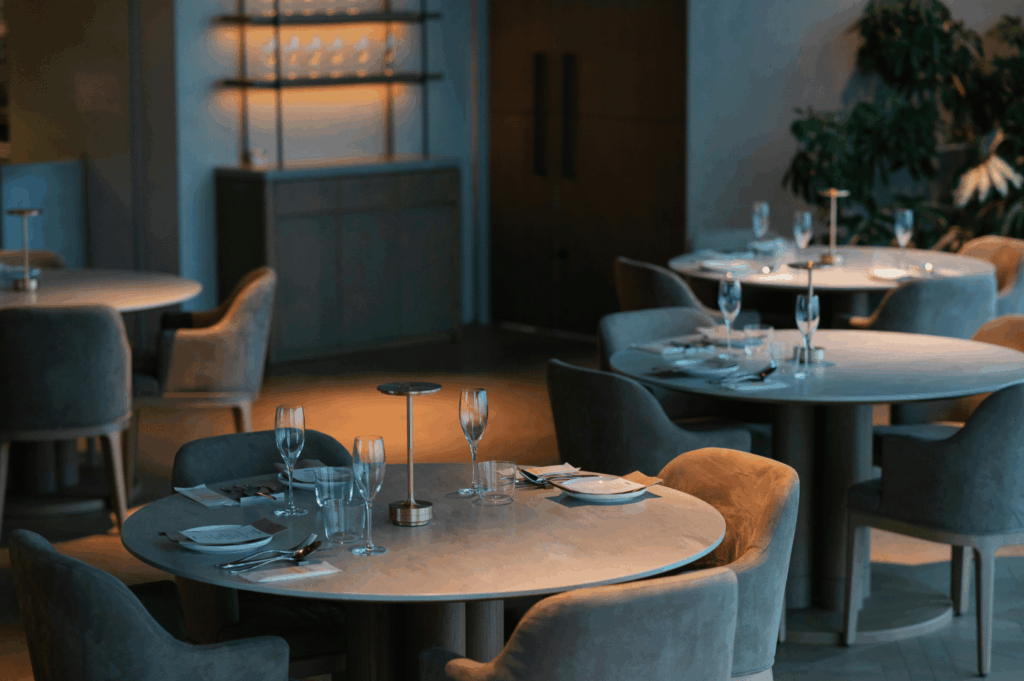
Developing a unique brand identity starts with a deep dive into your restaurant’s core values, mission, and personality. This identity is brought to life in your physical space, where every design choice—from the restaurant menu design to the lighting and interior design—tells a part of your brand’s story. The design process should be intentional, ensuring that each element, whether it’s the logo on your menu or the materials used in your furnishings, aligns with your brand’s vision.
Design Process
The design process should be intentional and collaborative. A dedicated team plays a crucial role in ensuring that the design process aligns with the brand’s vision and goals. Start by defining your brand’s personality and brand positioning, then create mood boards to visualize your concept. Work with professionals who understand how to translate brand into physical space while ensuring functionality.
For restaurant owners, staying engaged during the process is key. Share your mission statement, employee handbook, and inspiration boards so designers can align with your vision. From the color scheme to the floor plan, every detail should reflect your brand’s DNA.
Optimizing the Customer Experience
Delivering an exceptional customer experience is essential for building brand recognition and fostering loyalty. Restaurant owners should focus on creating a comfortable environment that caters to different group sizes, from intimate dinners to lively gatherings. The design of the dining area plays a crucial role—using acoustic panels and sound-absorbing materials can help manage noise levels, ensuring a pleasant atmosphere for all guests.
Conclusion: Designing for Lasting Impressions
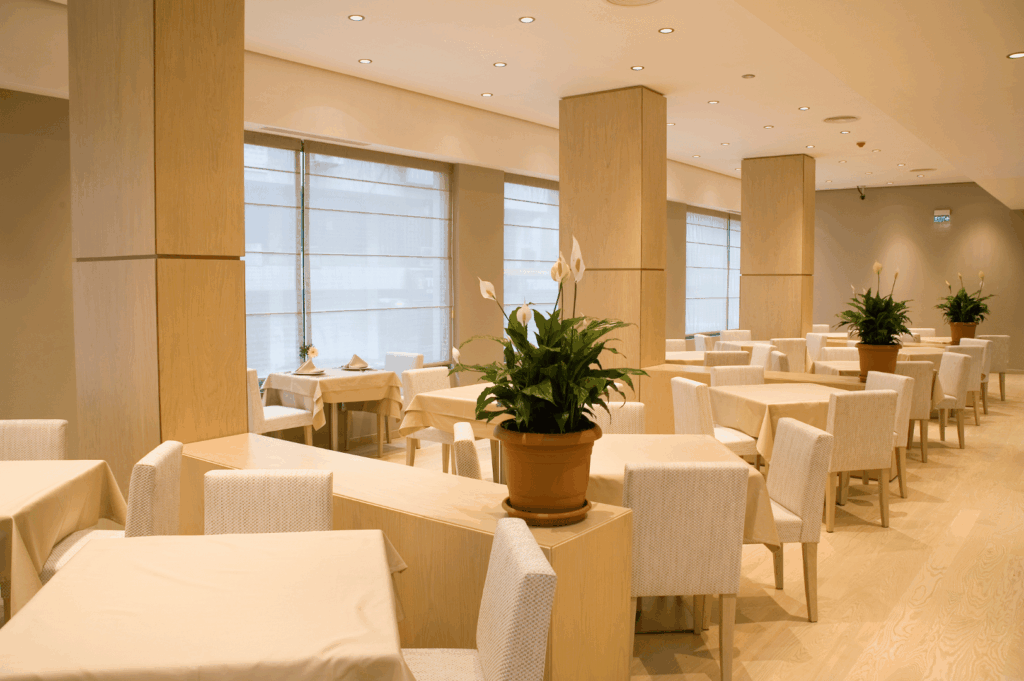
Building a strong restaurant brand identity design is about more than style—it’s about aligning design principles with your brand’s values, personality, and story. From restaurant menu design to lighting design, every detail contributes to a cohesive brand experience that leaves a lasting impression.
In an industry where trends shift quickly, the key is balancing timeless design elements with touches of creativity that reflect the modern world. Whether you’re opening a small restaurant or scaling to multiple locations, thoughtful restaurant design can turn your brand from a simple house of good food into a memorable destination.
Your brand identity already exists—it’s up to you to bring it to life in your physical space.
